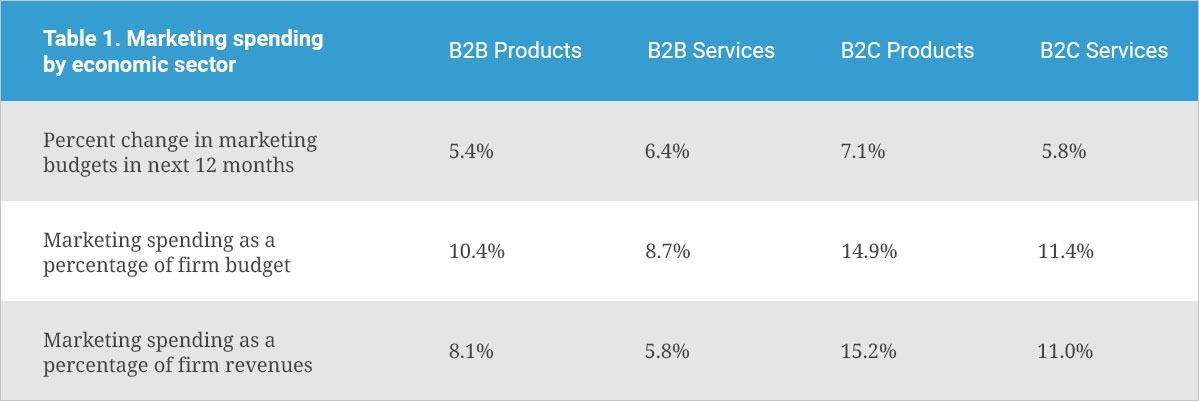“If you fail to plan, you are planning to fail” – Benjamin Franklin
Chances are, the sheer thought of creating a marketing and advertising plan brings instant heart palpitations. This means you’ll be expected to whip out your crystal ball once again and make predictive decisions that directly impact the success of your organization. You’ve been trusted with a budget, but you aren’t exactly sure where to invest. The good news? By adhering to the methodology below, you’ll easily be able to create a structured and effective marketing and advertising plan that will produce measurable results.
How did my previous marketing and advertising plan perform?
“Those who fail to learn from the past are doomed to repeat it” – Sir Winston Churchill
Let’s begin by creating a succinct overview of your performance from the previous year. The key here is to uncover top-performing channels and look for opportunities to improve subpar results.
Step 1 — To start, we’ll segment all marketing and advertising into three distinct categories: traditional, digital, and other. Next, let’s create a list of subcategories. For example, under traditional, list all spend associated with TV, radio, print, etc. Continue the same process for your digital channels. Anything that doesn’t fall under traditional or digital should be accounted for in the “other” category. This is anything from branding and entertainment expenses to customer surveys and training.
Step 2 — Collect all performance metrics. If you’re already working with an agency, this information should be easily accessible. Chances are, you’re reviewing this information on a monthly basis and have already been keyed into top-performing channels. If not, this information will prove valuable as you look toward the next year. Basic information on digital performance can be pulled directly from your Google Analytics account. If you don’t already have this FREE tool installed, start by following these instructions. Did I mention it’s absolutely FREE? Other valuable information could be internal documentation collected during the sales process, call data with sources, e-commerce transaction data, or customer surveys. The opportunities for mining the collective data of a campaign are plentiful.
Why do I need to make changes to my plan?
“The secret to change is to focus all of your energy, not on fighting the old, but on building the new.” – Socrates
Simply put, if you performed well previously and produced measurable results, creating a new strategy will be a breeze! If not, start the process with an overall focus on goal setting. By now, you’ve analyzed your data from the previous year and discovered opportunities for improvement. Begin by asking yourself some probing questions:
- Is there a particular campaign or initiative that stood out?
- What was my net profit by service, product, and department?
- How do these numbers compare to the projected and the budgeted?
- Are there services or products you wish to discontinue?
- Are there NEW services or products you want to promote?
- Which marketing and advertising channels produced the greatest results?
- Which marketing and advertising channels were a bust?
- Who are my ideal customers? (HINT: There’s not just one!)
Understanding what makes your current and potential customers tick is a key component of successful planning. In Malcolm Gladwell’s “Choice, Happiness, and Spaghetti Sauce,” he provides real-world examples of how we should embrace the diversity in human beings by understanding there is no perfect choice, only a series of choices. For example, with coffee, you have those who enjoy a robust brew and those who like something a little lighter. This methodology is very much in line with creating buyer personas. While patterns in human behavior do exist, there is no one size fits all, and you’ll need to consider this when creating campaigns.
Where am I going to allocate my marketing and advertising dollars?
“It’s not hard to make decisions once you know what your values are.” – Roy Disney
If you already have a predetermined budget you’re working with, great. If not, then this section will outline recommendations based on critical factors.
Step 1 – Setting a Budget
According to the Small Business Association, budgets depend on several factors; your industry, the size of your business, and your growth stage. Traditionally, B2C companies allocate the largest percentage of gross. For reference, in a study conducted by Chief Marketing Officer Survey, B2C companies promoting products allocated 15.2% of revenues, while B2B companies allocated nearly half of this at 8.1%.

© CMO Survey, 2016
When looking at the size of an organization, percentages will vary greatly. For example, businesses that turn over less than $25M annually spend on average 13.9% of revenues, while businesses $26M-$99M will spend 6.1%.

© CMO Survey, 2016
Step 2 – Allocate Your Budget by Category
Earlier, you divided your budget into three categories: traditional, digital, and other. You then collected all performance metrics to assess the effectiveness of each campaign. Now it’s time to allocate.
First, your “other” category should be no more than 10% of your allocation, while most companies average around 5%. It’s ok to have very few initiatives listed in this category. As the year progresses, this is the category you’ll rely on for variable expenses and budget flexibility. Next, based on your previous year of metrics, allocate funds for both traditional and digital initiatives. While this may seem elementary, it’s often the most overlooked yet fundamentally essential step.
The CMO Survey chart below further supports this process, demonstrating the acute contrast between digital and traditional spend over the past five years. Digital advertising investments have shown a consistent double-digit increase year after year and should not be ignored. If you’re currently a heavily focused traditional company, now is the time to consider a shift. At Allegrow, we believe in a digitally-led campaign but support both traditional and digital initiatives, and have found that an effective marriage of the two works best. For example, TV and YouTube channels working in parallel produce exceptional results that could not be achieved independently.
Example Marketing Allocation
Traditional = 40% ($400,000)
TV – $100,000
Radio – $100,000
Print – $100,000
Direct Mail – $100,000
Digital = 55% ($550,000)
Social Media – $150,000
Organic Search – $100,000
Email – $100,000
Paid Search – $200,000
Other = 5% ($50,000)
$1M Total Marketing Allocation
When should I roll out my campaign initiatives?
“Yesterday’s the past, tomorrow’s the future, but today is a gift. That’s why it’s called the present.” – Bill Keane
Now that you’ve allocated funds according to your three main categories and, ideally subcategories beneath each, we’re ready for the next step. Begin by creating a spreadsheet. List all categories, subcategories in rows, and now all twelve months in columns. The more comfortable you are with spreadsheets, the more advanced your spreadsheet can become. Your marketing spreadsheet is essentially a template. Fill in each month with your estimated marketing spend.
When allocating funds, keep in mind this is a twelve-month plan. If your business peaks in the summer, consider shifting funds accordingly to compensate. Also, keep in mind the personas you’ve created in previous stages and how this will affect spending across advertising channels.
Basic Marketing Calendar Example
What marketing and advertising channels will I leverage?
“Strategy without tactics is the slowest route to victory. Tactics without strategy is the noise before defeat” Sun Tzu
Sun Tzu was a Chinese general and philosopher whose strategies still resonate today, despite having lived over 2,000 years ago. Far too often, marketers and advertisers focus on leveraging popular channels, such as Facebook and Google, without defining the overall strategy. Strategies are formulated from research. What is your overall strategy? Is it to provide a low-cost solution or deliver your products or services in a unique way that gets people talking? Once you’ve defined your overall strategy and considered the buyer personas you’ve previously created, prepare your tactical approach.
Every tactic should be in line with the goal you are trying to achieve. Consider how you’ll effectively implement your strategies. For example, if you’re looking to increase market share among affluent homeowners in your DMA (Direct Market Area), you might leverage a direct mail campaign to specific neighborhoods using variable data with a Google display overlay, targeting the same homes and creating multiple touch points. Cross-channel campaigns can be highly effective. Whatever your tactic, knowledge of your customer base will help you to choose the correct channel.
There are hundreds of marketing and advertising channels. Some of the more popular channels include…
- Direct Mail
- Social Media
- Search Engine Marketing
- PR
- TV
- Content Marketing
- Radio
- Print Advertising
I’m often reminded of a scene in Indiana Jones and the Last Crusade, whereby they are asked to choose the holy grail from a plethora of options. The old knight tells them they must choose, but choose wisely. We often rush to make significant decisions without first considering how they can affect us. In marketing and advertising, when selecting a channel, make informed decisions and always weigh all of your options. This is often the only difference between a successful campaign and a mediocre one.
Who will be responsible for my success?
“You cannot escape the responsibility of tomorrow by evading it today.” – Abraham Lincoln
If you’re like most organizations, you have a series of vendors you work with. One company for social, one for print, one for paid advertising, and the list goes on and on. This makes it hard to monitor and track campaigns and makes it exceedingly arduous to maintain focus while adhering to brand standards.
Allegrow was created with you in mind. If you’re looking for one single point of contact on all marketing and advertising campaign initiatives and want to leverage the expertise of 30+ industry leaders, then we may be a good fit for your organization. Simply put, we’ve got you covered! If not, I suggest creating a project task spreadsheet that lists the following: budget, channel, task details, start date, due date, priority, status, responsible party, and (of course) a notes section. This spreadsheet is vital in helping you to track your initiatives better.
Regardless of your chosen path, remember what you have learned and, most importantly, understand that we are all on this journey together. Knowledge is meant to be shared. If you have something to add, please, share your feedback below so that others may benefit.
